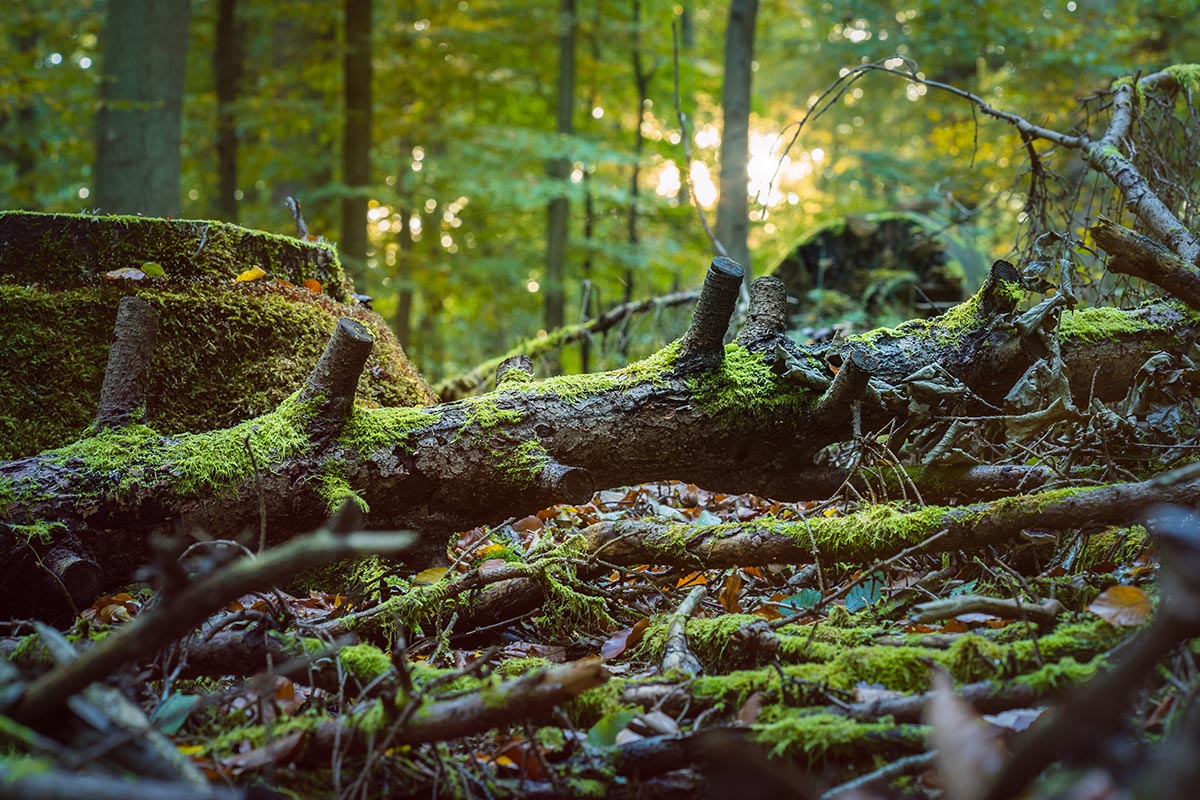I’ve spent a lot of time in forests over the years, and if you’d asked me early in my career what the most fascinating thing in a forest was, I might have said the trees themselves—the towering oaks, the maples, the pines. But over time, I’ve come to realize that some of the most extraordinary stories in a forest happen not above us, but on the forest floor. Specifically, in rotting wood.
It sounds odd, I know. Rotting wood doesn’t seem glamorous. It’s broken, decayed, often slimy or brittle. But the fact is that a 100 year old tree that has fallen to the ground will impact the forest for another 100 years. In this way, as an impact factor, a tree’s life is twice as long as its time alive. But what I’ve learned from studying decomposition is that it’s one of the most important, most revealing processes in nature—and one that offers surprising lessons for life.
Life in Decay
When a tree falls and begins to decay, it doesn’t become lifeless. On the contrary, it becomes a bustling ecosystem. Fungi, bacteria, insects, and countless microorganisms move in. They feed on the wood, breaking down complex compounds and recycling nutrients back into the soil. Mosses and seedlings take root in the decomposing log. Even animals rely on this habitat—salamanders, beetles, and small mammals find food and shelter in this seemingly “dead” space.
What fascinates me is how decomposition isn’t a process of failure; it’s a process of transformation. The tree may be gone in its original form, but it lives on in countless other ways. Its structure supports life, its nutrients fuel growth, and its story continues through other organisms. It’s a vivid reminder that endings are rarely final—they’re often beginnings in disguise.
Patience and Persistence
Watching decomposition unfold is a lesson in patience. A log doesn’t break down overnight. It takes months, sometimes years, for fungi and microbes to do their work. In a world where we often want immediate results, observing a decaying log forces you to slow down, to notice gradual changes, and to appreciate the steady persistence of natural processes.
In my own work, I’ve found that this cadence translates to life outside the forest. Whether it’s conducting research, teaching students, or solving problems in daily life, progress often happens slowly, quietly, and incrementally. Decomposition reminds me that even when change isn’t dramatic or visible immediately, meaningful transformation is still happening.
Adaptation in Action
Rotting wood also teaches lessons about adaptation. The organisms that inhabit decaying logs are specialists—they’ve evolved to survive in conditions that would be inhospitable to others. Fungi can digest tough cellulose, insects can navigate compact tunnels, and bacteria thrive in moist, low-light environments.
This adaptability is inspiring. Life finds a way, even in the most challenging circumstances. It’s a lesson that applies broadly: resilience isn’t about avoiding hardship—it’s about finding ways to thrive within it, adjusting strategies, and using available resources to keep moving forward.
Interconnectedness
One of the most remarkable things about decomposition is how interconnected everything is. No single organism drives the process alone. Fungi break down wood fibers, which bacteria then further process. Insects help fragment material, spreading spores and accelerating decomposition. The nutrients released support surrounding plants, which in turn feed herbivores, and so on.
This web of interactions reminds me of human communities and ecosystems alike. We are all part of networks, relying on each other in ways we might not immediately see. Resilience often depends on collaboration, shared effort, and recognizing that even small contributions matter.
Seeing Value in the Overlooked
Rotting wood is a perfect metaphor for resilience because it reminds us that value often exists in unexpected places. We tend to focus on the new, the shiny, or the obvious, but nature thrives in the overlooked corners. By paying attention to decay, to the humble, “broken” pieces of life, we can see opportunity and growth where others might see waste or failure.
This perspective has shaped how I approach challenges in my own life. When things don’t go as planned, when a project falters, or when circumstances feel “ruined,” I try to remember the lesson of the fallen log. There is potential in every situation—if you observe carefully, adapt, and remain patient, growth can emerge from decay.
A Personal Reflection
I still remember one late autumn walk when I stopped to examine a log covered in mushrooms and moss. I watched ants navigating the grooves, fungi slowly spreading across the surface, and seedlings pushing upward through the decaying bark. At first, it seemed ordinary—just a dead tree. But then I realized how much life, adaptation, and resilience was packed into that single log.
It struck me that resilience isn’t always dramatic or loud. It’s subtle. It’s quiet persistence, incremental growth, and transformation that may not be immediately visible. Decomposition, in its slow, steady way, captures this perfectly.
The hidden life of rotting wood has changed the way I see forests, ecosystems, and even human challenges. Decay is not failure—it’s transformation. Patience, adaptability, interconnectedness, and finding value in unexpected places are lessons that decomposition teaches effortlessly.
Next time you walk through a forest and notice a fallen log, don’t dismiss it as waste. Take a closer look. Observe the fungi, insects, and seedlings thriving there. You might see resilience in action and be reminded that even in what seems like an ending, life—and opportunity—continues.
